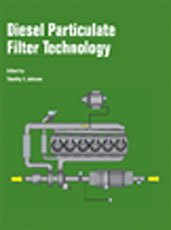Journal Article
Review of Vehicular Emissions Trends
2015-04-14
2015-01-0993
This review paper summarizes major developments in vehicular emissions regulations and technologies from 2014. The paper starts with the key regulatory advancements in the field, including newly proposed Non-Road Mobile Machinery regulations for 2019-20 in Europe, and the continuing developments towards real driving emissions (RDE) standards. An expert panel in India proposed a roadmap through 2025 for clean fuels and tailpipe regulations. LD (light duty) and HD (heavy-duty) engine technology continues showing marked improvements in engine efficiency. Key developments are summarized for gasoline and diesel engines to meet both the emerging NOx and GHG regulations. HD engines are demonstrating more than 50% brake thermal efficiency using methods that can reasonably be commercialized. Next, NOx control technologies are summarized, including SCR (selective catalytic reduction), lean NOx traps, and combination systems. Emphasis is on durability and control.

